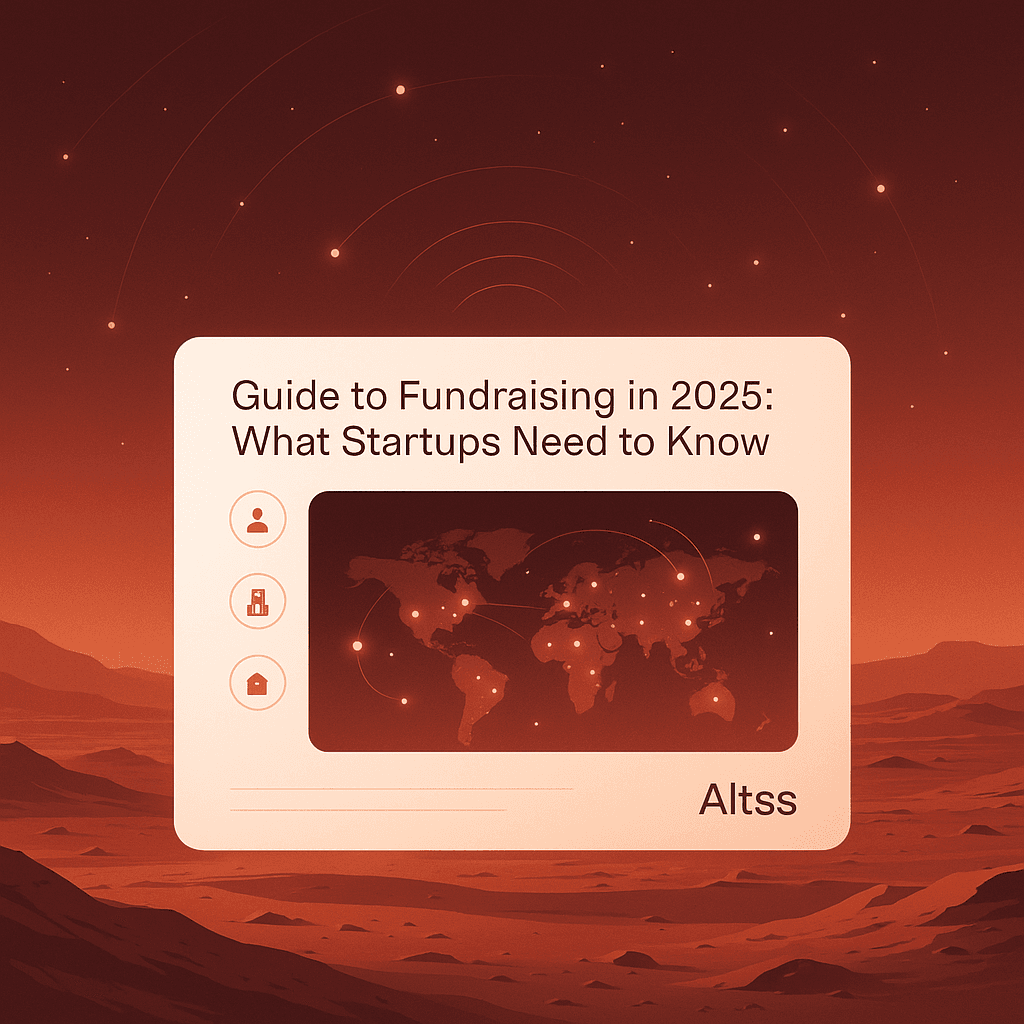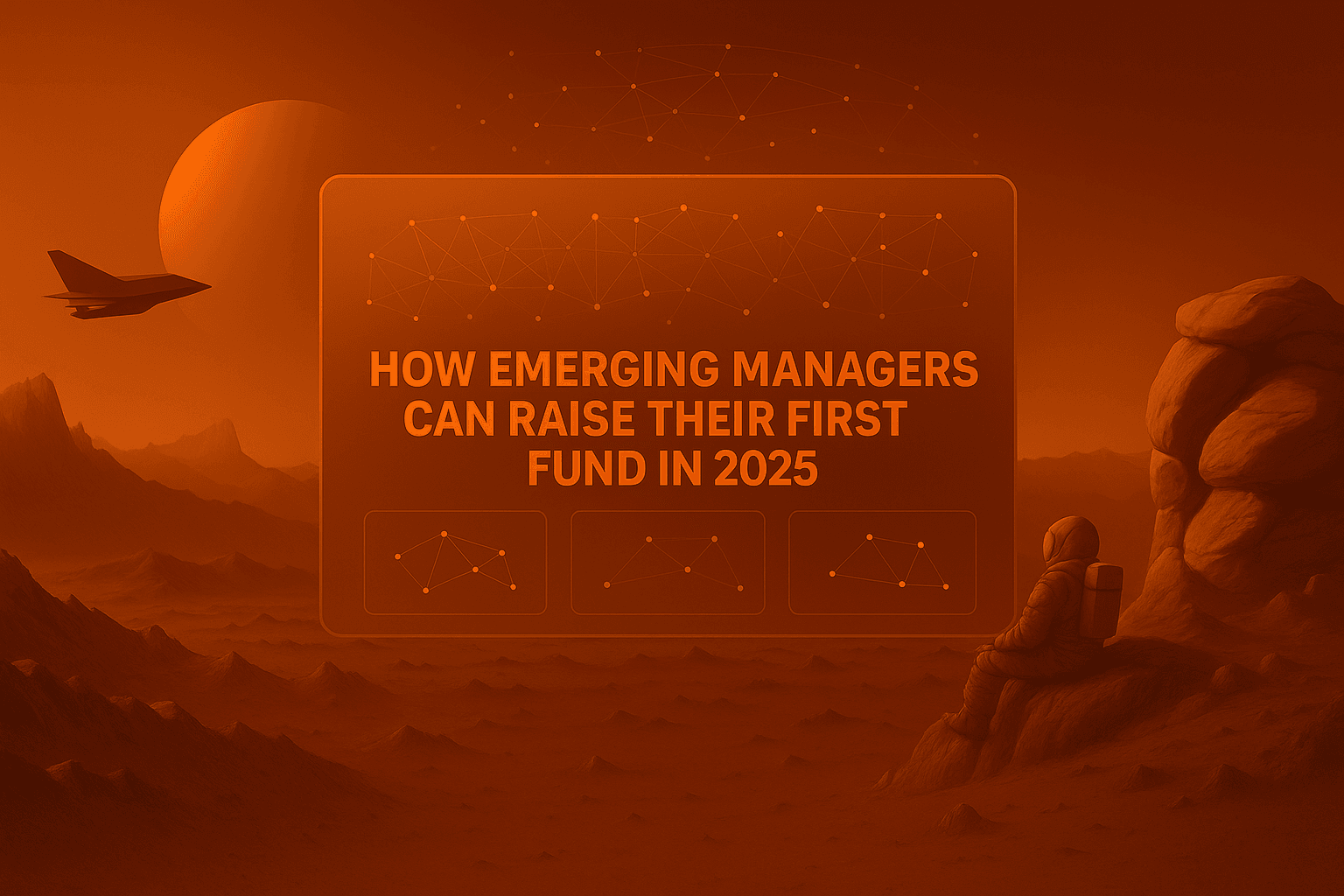Guide to Fundraising in 2025: What Startups Need to Know
A tactical guide for startup founders navigating the 2025 capital market. Learn what investors expect, where capital is flowing, and how OSINT-powered platforms like Altss can help you raise smarter from seed to Series C.

Guide to Fundraising in 2025: What Startups Need to Know
In 2025, raising startup capital has become an exercise in precision, proof, and positioning. The landscape has shifted dramatically from the exuberant years of 2020–2021. Today, investors are more disciplined, sector preferences have sharpened, and the bar for traction is significantly higher. Whether you're a founder raising your first institutional round or preparing for Series B/C, your fundraising success hinges on knowing who to target, how to tell your story, and how to differentiate.
In this tactical guide, we break down the new rules of startup fundraising—and explain how platforms like Altss can support your investor targeting from seed to late growth.
Market Context: U.S. Startup Fundraising Trends in 2025
1. Capital Availability Rebounded—But Is More Selective
According to PitchBook, Q1 2025 saw over $44 billion in U.S. venture deal value, up 21% YoY. However, the number of deals continues to decline, indicating that while capital has returned, it’s concentrated in fewer, better-prepared companies.
2. AI and Infrastructure Still Dominate
AI startups accounted for over 23% of U.S. VC dollars in early 2025, with infrastructure (AI-native chips, developer tools, cybersecurity, and distributed systems) commanding premium valuations.
3. Early-Stage (Pre-Seed/Seed) Funding Is Recovering
While growth rounds remain competitive, there’s been a modest resurgence in early-stage interest, particularly from family offices and sector-focused micro-VCs. However, traction is now a baseline requirement.
4. Family Offices Are Becoming Key Players
SFOs and MFOs are playing an outsized role in early-stage rounds, especially in healthtech, climate, fintech, and niche vertical SaaS. Altss data confirms that many are bypassing institutional syndicates and going direct.
5. Warm Intros Are Still King—but OSINT is the Great Equalizer
Founders with access to strong networks still have an advantage. However, platforms like Altss help close the gap by surfacing verified decision-makers, historical investment behavior, and co-investment signals—even when intros are hard to come by.
Key Fundraising Strategies for Founders in 2025
1. Nail Market Validation—First
Investors want evidence, not just a vision. This includes:
- Revenue or signed LOIs
- User retention metrics (DAU/MAU, NPS)
- Waitlists, case studies, or proof-of-demand
- Early enterprise contracts or pilots
2025 Tip: Post-product-market-fit founders are receiving the highest valuation premiums. Focus your narrative on retention, not just acquisition.
2. Bulletproof Your Financials
Be ready to defend every number. Investors expect:
- Realistic CAC vs LTV projections
- Detailed unit economics by segment
- Burn rate visibility with >12-month runway
- A clear break-even timeline
Tools like Pilot, Visible, or Growblocks are increasingly used by founders to prep due diligence.
3. Build a Narrative for This Market
Your story must answer the "Why now?" for both your category and your team. In 2025:
- AI-native startups must show defensibility beyond LLM wrappers
- Climate and sustainability founders should lead with policy/regulatory tailwinds
- Consumer brands must anchor in virality or community—CAC arbitrage is gone
4. Diversify Capital Sources
Consider these complementary paths:
- Family Offices: Great for first checks into strong founding teams, especially if thesis-aligned
- Venture Debt: Ideal if you have MRR and low burn (e.g. via Brex, Mercury, or Founderpath)
- Crowdfunding: Best for community-led brands (e.g. Wefunder, Republic)
- Strategic Angels: Target founders of adjacent companies or former operators
Altss enables segmentation of investors by check size, sector, strategy, and direct deal history—making these decisions faster and more accurate.
Altss for Startup Fundraising: From Seed to Series C
Altss is not just for fund managers—it’s rapidly becoming a go-to tool for venture-backed startups seeking more targeted, transparent, and trustworthy capital sources.
Why Startups Use Altss:
- Identify Family Offices with Sector Alignment
- E.g. "climate-tech-focused FO, <$250M AUM, active in seed/Series A, U.S.-based"
- Track Investor Signals in Real Time
- Beta mandate tracking surfaces news of recent fund launches, board appointments, and capital shifts
- Segment Investor Outreach Based on Verified Intelligence
- Altss’s OSINT-driven platform offers monthly updates across over 5,000 family offices, RIAs, endowments, and crossover funds
Altss Verification Process:
Every investor listed on Altss is vetted via a proprietary open-source intelligence (OSINT) system, ensuring:
- Real LP behavior (vs fake or outdated profiles)
- Active check-writing status
- Contact-level visibility (when public)
- Thematic investment alignment
Use Case: A HealthTech SaaS Startup Raising Series A
Problem: Traditional outreach yielded 3% response rate from generic lists.
Solution: Altss provided:
- A custom list of 72 family offices with a health/biotech focus
- Prior co-investor history with relevant GPs
- 8 warm intros via shared angel investors
Result: Closed $5.2M round in 6 weeks with 3 Altss-identified family offices participating.
What to Avoid in 2025 Fundraising
❌ Relying on Stale Lists
Most email databases floating around LinkedIn or Notion have been used by thousands. LPs are fatigued. Altss delivers real-time accuracy.
❌ Over-Relying on VCs for Intros
Founders with no warm VC intros can now outperform if they use data strategically. OSINT-level visibility on Altss helps neutralize access gaps.
❌ Delaying LP Engagement
Family offices and RIAs often take longer to convert—but offer flexible terms. Start these convos early, even if you're not actively raising.
❌ One-Size-Fits-All Pitches
Segment your outreach based on LP type, geography, investment history, and AUM. Altss makes this easy with custom filters.
2025 Fundraising Resources for Founders
- Altss:www.altss.com – LP intelligence for founders
- Visible.vc: Real-time fundraising dashboards
- Carta + Mercury: Banking and cap table infrastructure
- TechCrunch, Axios Pro Rata: News on who’s raising what
- SuperReturn, 0100 Conferences, Next Wave: Best IR events for startup/LP matchmaking
Final Thoughts: Precision Wins in 2025
Raising capital in 2025 means operating like an investor yourself—mapping the field, tracking signals, and targeting intelligently.
With Altss, startups gain:
- Access to under-the-radar capital (family offices, strategic LPs)
- Live mandate and co-investment intelligence
- Tools to personalize, prioritize, and convert
Fundraising isn't just about connections anymore. It's about intelligence.
Let Altss help you fundraise with clarity, speed, and strategic advantage.
👉 Book a demo to see how Altss supports your next round.
Related articles

Anchor Investors for Emerging Managers & Startups: The 2025 Playbook
A step‑by‑step playbook for landing an anchor investor (or LP), understanding anchor vs. lead, structuring first closes, and creating momentum in your round.

How Emerging Managers Can Raise Their First Fund in 2025
How emerging managers can raise their first fund in 2025: a precise, step-by-step playbook that covers allocator targeting, pipeline math, ILPA-aligned diligence, OSINT signals, and modern outreach. Written for GPs and IR teams using verified allocator data and real-time LP coverage.